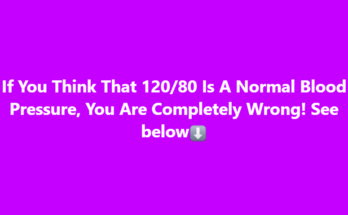Cancer remains one of the most formidable health challenges globally — a complex family of diseases that evolve, adapt and resist treatment. But in 2025, a new wave of breakthroughs is shifting the landscape. From game-changing immunotherapies and precision diagnostics to AI-driven drug development and nano-technologies, the fight against cancer is entering a new era. This article highlights the most significant advances this year, explains how they work, and explores their promise and limitations.
1. Immunotherapy for Solid Tumours: CAR-T and beyond
One of the most noteworthy achievements in 2025 is the successful demonstration of chimeric antigen receptor T-cell (CAR-T) therapies in solid tumours — a frontier long considered too difficult. Until now, CAR-T had major success in blood cancers but struggled with solid masses. A randomized controlled trial in advanced gastric or gastro-oesophageal cancers showed a 40 % longer survival with CAR-T treatment compared to standard care.



This advance matters because ~90 % of cancers are solid tumours (lung, breast, pancreas, brain). By showing efficacy in this broader class, CAR-T becomes a bigger weapon. The therapy involves harvesting a patient’s own T-cells, genetically engineering them to recognise a tumour-specific antigen, then infusing them back to destroy cancer cells.
In parallel, CAR-NK cells (natural killer cells engineered with chimeric receptors) are gaining traction: they promise off-the-shelf use (rather than patient-specific harvesting), lower risk of severe side-effects, and broad applicability. Since 2025 there are over 120 clinical trials investigating CAR-NK therapies for both blood and solid tumours.
2. Precision Medicine & Liquid Biopsy Diagnostics
Precision (or personalised) medicine is no longer a promise — in 2025 it is a reality. One of the hallmark breakthroughs is the scaling up of liquid biopsies — blood tests that detect circulating tumour DNA (ctDNA), offering non-invasive, frequent monitoring of cancer’s genetic footprint. A major health system began rolling out liquid-biopsy screening for breast and lung cancer patients, saving days to weeks in diagnostic time and enabling earlier targeted treatment.
Add to this the fact that genomic tumour profiling (sequencing the genetic and molecular make-up of a tumour) is now routine in many centres. Oncologists can match targeted therapies to mutations like KRAS, EGFR, BRAF, and others — including some which until recently were deemed “undruggable”. The upshot: therapies become more effective, side-effects fewer, and outcomes better.
3. Antibody-Drug Conjugates (ADCs) & Targeting the “Undruggable”
Another breakthrough in 2025 involves next-generation antibody-drug conjugates (ADCs). These combine the targeting power of antibodies (which bind to specific antigens on cancer cells) with potent chemotherapy payloads, delivering “smart bombs” that strike tumour cells while sparing healthy tissue. These have expanded into cancers previously hard to treat.
Moreover, drug development is advancing against “undruggable” targets such as the KRAS G12D/V mutation, and GPCR (G-protein coupled receptor) oncogenes. This means patients with cancers driven by these mutations — once considered untreatable — now have options. The result is a deeper arsenal of targeted therapies that can dismantle cancer’s adaptive survival mechanisms.
4. Cancer Vaccines & Immune Priming
Vaccines against cancer once meant prevention (e.g., HPV vaccine). Now, in 2025, we see therapeutic cancer vaccines that treat existing disease by training the immune system to recognise tumour-specific antigens or neo-antigens. Early-phase trials in advanced kidney cancer have reported remission in nine out of x patients, tracking three years of follow-up with minimal side-effects. The custom-designed vaccine process uses DNA/RNA sequencing of the tumour, identifies neo-antigens unique to that patient, and then manufactures a vaccine to stimulate a focused immune response.
What’s more, “off-the-shelf” versions (not fully bespoke) are emerging, potentially reducing cost and broadening access. These vaccines may become part of initial therapy rather than a last-resort salvage treatment.
5. Nanotechnology & Advanced Drug Delivery
Advances in nano-medicine are hitting oncology. In 2025, small particles (nano-carriers) are being used to deliver chemotherapy, immunotherapy, or even gene-editing cargo directly to tumour sites — reducing systemic toxicity and improving efficacy. One innovative area is theranostics: nanoparticles that both treat (therapy) and track (diagnostics) cancer in real time, enabling immediate assessment of treatment response.
For instance, an experimental radiopharmaceutical labelled with alpha-emitters carrying tumour-specific ligands is being trialled in prostate cancer: the compound homed to PSMA-positive cells and delivered high-energy radiation in situ, minimizing damage to surrounding tissue.
6. Artificial Intelligence & Multi-omics Oncology
2025 marks the year when AI and machine-learning technologies became integral in cancer care. AI frameworks now model tumour progression, predict treatment response, and suggest optimal therapies based on multi-omic data (genomics, transcriptomics, epigenomics, imaging). These decision-support systems help clinicians choose the right therapy for the right patient at the right time, reducing guesswork and accelerating care.
In clinical research, AI is also shortening trial timelines by identifying recruitment candidates, simulating outcomes, and optimising protocol design. This means therapies move from lab to clinic faster and with better safety.
7. Convenient Immunotherapy Administration
Beyond treatment potency, 2025 delivered breakthroughs in delivery convenience. Immunotherapy that once required hour-long drips has been reformulated into subcutaneous injections administered in five minutes for 15 types of cancer. This innovation improves patient convenience, reduces hospital burden, and may improve adherence to treatment. While not changing the mechanism of action, it markedly improves the real-world impact of advanced therapies.
8. From Research to Reality: What It Means for Patients
All these breakthroughs are more than jargon — they translate into meaningful advances for patients:
-
Improved outcomes: longer survival, higher remission rates, fewer relapses.
-
Fewer side-effects: targeted therapies and delivery systems reduce collateral damage.
-
Faster diagnosis & treatment: liquid biopsies and AI path workflows shorten time from detection to therapy.
-
Better quality of life: convenient administration, fewer hospital visits, less toxic therapies.
-
Broader access: off-the-shelf cell therapies, more cost-effective vaccines, and deliveries that are simpler and faster.
9. Challenges and Caveats
Despite the excitement, some caveats remain:
-
Cost & access: Many of these technologies remain expensive and limited to advanced centres, risking widening inequality.
-
Long-term data: Some therapies have short-term success but need extended follow-up to understand durability and late effects.
-
Resistance & adaptation: Cancer remains adept at evolving and developing resistance — no single therapy is a silver bullet.
-
Safety & regulation: Gene-engineering and novel biologics require careful oversight to manage unforeseen risks (e.g., immune-overactivation).
-
Scalability: Personalized therapies (cell-based, neo-antigen vaccines) must scale for widespread use without prohibitive cost.
10. The Road Ahead: What to Watch
Looking forward, here are key areas to follow:
-
Combination therapies: Pairing targeted therapy + immunotherapy + vaccine + nano-delivery in concert may become standard.
-
Early detection & prevention: Liquid biopsies and AI screening may shift many cancers into treatable, early-stage disease.
-
Equity & global rollout: Ensuring these treatments are accessible in low- and middle-income nations will determine real global impact.
-
Real-time adaptive treatment: Using AI and longitudinal monitoring to alter therapy in response to tumour evolution.
-
Cost reduction: Manufacturing efficiencies, off-load therapies and generic biologics will help bring cost down.
Conclusion
2025 is a banner year in cancer treatment: we are truly entering an era of precision, power and purpose. Therapies that train the immune system, tailor treatment to the individual, deliver drugs with surgical precision and adapt to the tumour’s evolution are no longer hypothetical — they are becoming standard practice. While challenges remain, the trajectory is clear: cancers that once carried grim odds are now treated with increasing confidence, sophistication and hope.
For patients, families and caregivers, the message is profound: we are moving from fighting cancer to outthinking and out-engineering it. The breakthroughs of 2025 point toward a future where cancer is less a sentence and more a condition to manage — and in some cases, one to cure.



